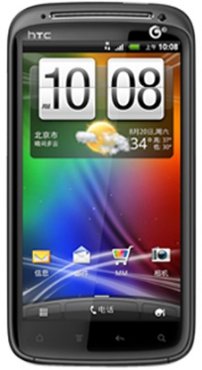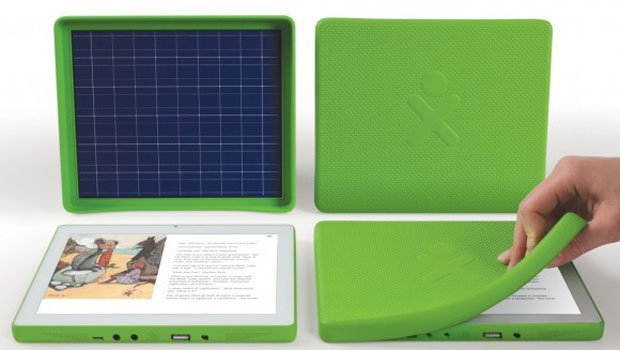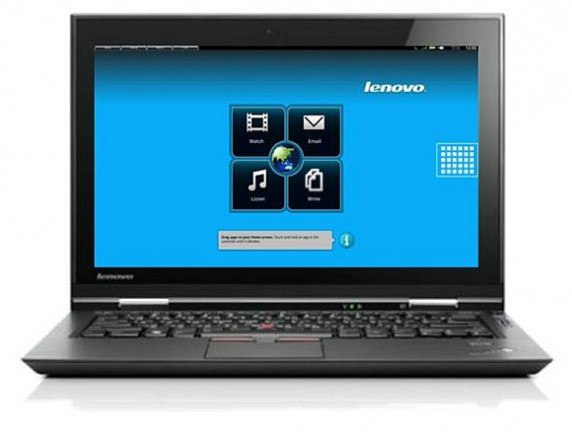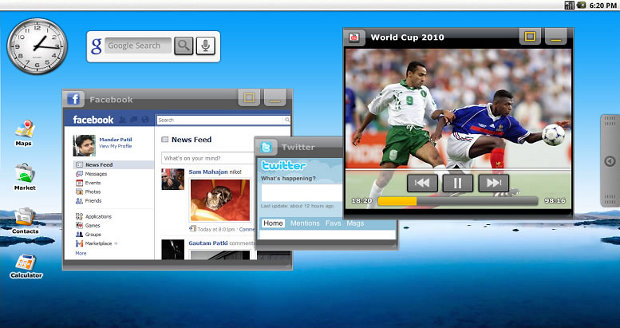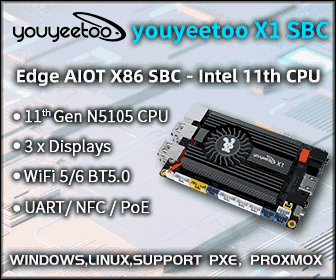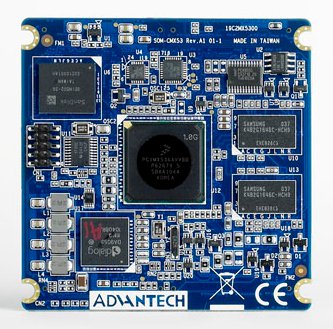ST Ericsson is showcasing HTC and Via Mobile Android smartphones based on ST Ericsson Nova U8500 dual-core Cortex A9 processor at CES 2012. The two phones are the HTC Sensation (Z710t) and Via Mobile Smartphone (I could not find any names) targeted at the Chinese market, although they plan to sell them in Europe and US later. The Via Mobile phone features a 4.3″ capacitive touchscreen, HSPA+ (14.4Mbps) and a 5MP rear camera. The smartphones were apparently running gingerbread, but they will also release an Android ICS version soon, as the latest Android release is already running on their hardware reference platform. Performance wise, I’ve seen an Antutu Benchmark that gives HTC Sensation Z710t a score of 4729 that’s roughtly equivalent to LG Optimus 2X (Score: 4729) based on Nvidia Tegra 2. The price of the phones were not disclosed, but the ST Ericsson HTC Sensation is already sold in […]
Marvell Armada 1500 Google TV at CES 2012
Last week, I gave some details on the new Marvell Armada 1500 Google TV reference design. Marvell is now at CES 2012 showcasing their product. You can watch the video below with the reference design running Google TV in Android 3.2 (Honeycomb). The interesting part of the BOM cost of this type of device should be close to 25 USD. (That means possibly around 50 USD retail). I would love to see a Google TV HDMI Dongle, similar to the “Roku Streaming Stick“.
OLPC XO-3 Sugar Linux Tablet
The One Laptop Per Child (OLPC) foundation has unveiled the OLPC XO-3 Tablet at CES 2012. This Tablet features a 8″ 1024×768 capacitive LCD touch screen running a version of Sugar Linux for Touchscreen. This must be the only tablet ot running Android at CES 2012… This current sample only have a front camera, but the final device will have both a front and rear camera. They also have an optional solar panel cover (4W panel), that can be used to charge the tablet (2W), so in ideal conditions if you charge it for 2 hours, the tablet can be used for 4 hours. Alternatively, you can also charge it for the hand cracker. A Pixel Qi tablet (not shown in the video below) is also available for extra costs (I’ve heard 100 USD extra) for better readability. OLCP did not specify availability. The way OLPC works is that they […]
Acer Iconia Tab A700 10.1″ (1920×1200) Android 4.0 Tablet
CES 2012 is almost there. Yesterday, Acer introduced its new Android Tablet based on the quad core Nvidia Tegra 3 @ 1.3 Ghz, with a 10.1″ capacitive touchscreen (1920×1200) and running Android 4.0. Acer Iconia A700 comes with Bluetooth support, a microSD card slot, HDMI port and a 5MP rear camera. Acer customized the UI with Acer Ring, a circular launcher menu that lets you access specific apps straight from the lock screen. although this is still broadly Android 4.0. As we could expect, Android runs pretty smoothly with the Tegra 3. The 1920×1200 resolution allows to play 1920×1080 (1080p) videos and have the Android menu bar at the bottom of the screen at the same time without scaling the video. The device is expected to ship in Q1 2012 for an undisclosed price.
Intel or ARM NoteBook? Lenovo Says Both
Lenovo has announced the ThinkPad X1 Hybrid notebook which features an Intel Core processor (i3, i5, or i7 depending on the model) AND a Qualcomm Dual core ARM processor, allegedly a Qualcomm APQ8060 and runs both Windows 7 and a custom version of Linux. My first reaction when I read the news was: “What a stupid idea!” :~/ The ThinkPad X1 Hybrid has 13.3″ HD display with 1366×768 resolution and built with Gorilla Glass. The laptop also features an HD webcam, a fingerprint reader, an encrypted hard disk drive, an HDMI port, USB ports, and Intel’s Wireless Display (WiDi) technology. RapidCharge technology charges to 80% capacity in 30 minutes, i.e. approximately the time it takes to take a shower and cook an egg… (Not my idea, see promo video below). The only thing that can possibly justify having two different processors on the machine is the Instant Media Mode (IMM) […]
Wind River Unveils Android User Experience, Connectivity and Medical Modules.
Wind River has introduced Wind River Solution Accelerators for Android, a series of software modules to help developers jumpstart their Android development and rapidly integrate compelling features and functionalities to their devices. Wind River Solution Accelerators for Android are currently available in three software modules: User Experience: Accelerated boot time technologies including Hyper boot enabling devices to resume from RAM in less than 1 second and from Flash in 8 seconds. This technology can speed up the Android boot time by 30%. It is hardware agnostic and can run on different hardware platforms with little or no customization effort. Multi-windowing screen navigation aimed at devices with larger screens such as tablets, automotive infotainment systems, media phones, and industrial devices. The application windows are sized based on the remaining portion of the visible screen and users can minimize, resize, and arrange them as they wish. (See Picture on top) Media Center […]
Archos G9 Tablets Will Officially Get Android 4.0
Back in December, a demo of Android 4.0 running on Archos 80 G9 was published. Today Archos has officially announced that Android 4.0 would be available very soon for all Archos G9: Archos 80 G9 and Archos 101 G9 including the Turbo version in their Facebook account: Who’s Hungry for ICE CREAM SANDWICH? All ARCHOS G9’s (both current and future) will receive an official upgrade to ICS (ANDROID 4.0) in the near future. With ARCHOS, your device will have full ICS including access to the Google Market, Google Suite of Apps and DRM Support There won’t be any official update for Archos G8 and if you have such device, you’ll have to stay with Android 2.2 for now. If you really need Android 2.3 (Gingerbread) on your Archos Generation 8 (e.g. Archos 70IT), you’ll have to use CyanogenMod CM7 ROM.
Advantech ROM-1210 Computer on Module Powered by Freescale i.MX53
Advantech announced today a new Computer On Module (COM), the ROM-1210, powered by Freescale i.MX53 Cortex-A8 Processor clocked at 1 Ghz, with 256 to 512MB DDR3 onboard, 2GB Flash (upgradable to 64 GB) and supporting OpenGL ES 2.0, OpenVG 1.1 hardware 2D/3D accelerators. The module also supports full HD 1080p video decoding and HD 720p video encoding via its hardware engine. The company targets human machine interface (HMI), digital signage, industrial automation, cloud computing and portable applications with this platform that can run Android 2.3, embedded Linux 2.6 and Windows Embedded Compact 7. Here are ROM-1210 specifications: CPU – Freescale i.MX535 Cortex-A8 1GHz (i.MX536 Cortex-A8 800MHz for wide temp. only) System RAM – 512 MB DDR3 (256 MB as optional) Flash – 2 GB (up to 64 GB) Graphic Chip – 24-bit LCD controller by CPU. Resolution Default 800×480 WVGA (320X 240 ~ 1920X1080 as optional) LCD Interface – 2x […]


